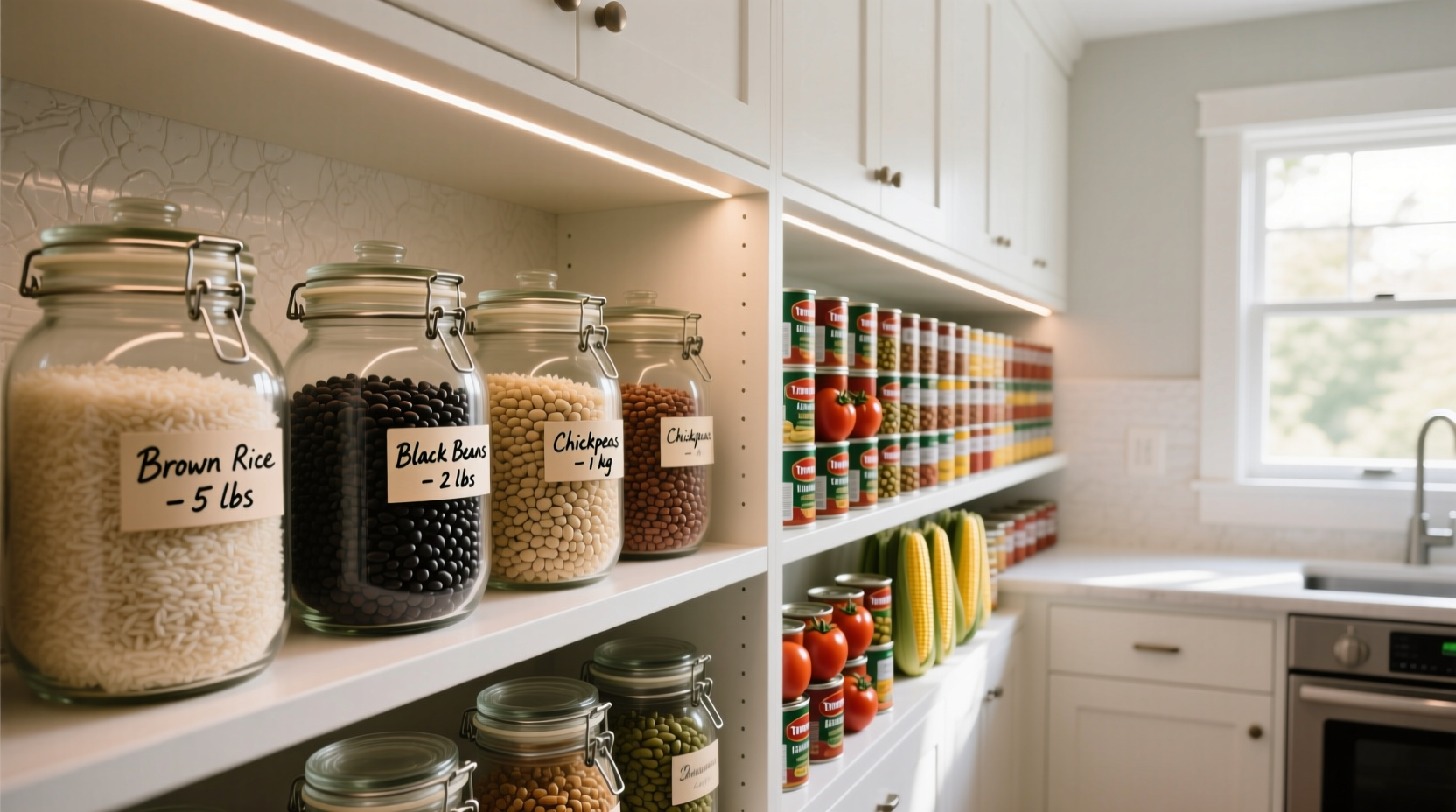Understanding Non Perishable Foods: Beyond the Basics
When you search what are non perishable foods, you're likely building an emergency kit or optimizing pantry storage. True non-perishable foods resist spoilage through processed preservation techniques, though no food lasts forever. Modern methods trace back to Nicolas Appert's 1809 canning breakthrough for Napoleon's army—a pivotal moment in food security history (National Center for Home Food Preservation). Today, these staples form the backbone of FEMA's 3-day emergency supply recommendations.
Your Essential Non Perishable Foods Checklist
Focus on nutrient-dense, ready-to-eat options requiring minimal preparation. The USDA FoodKeeper database confirms these maintain safety when stored properly in cool, dry conditions:
| Food Item | Shelf Life | Critical Storage Tip | Emergency Use Case |
|---|---|---|---|
| Canned beans (low-sodium) | 2-5 years | Store below 75°F; discard dented cans | Protein source requiring no cooking |
| Dried lentils | 1-2 years | Use oxygen absorbers in airtight containers | Quick-cook protein for limited-fuel scenarios |
| Honey | Indefinite | Prevent crystallization with room-temp storage | Calorie-dense energy with antimicrobial properties |
| Instant oats | 18-24 months | Keep away from moisture sources | Hot meal with just boiling water |
| Shelf-stable milk | 6-12 months unopened | Refrigerate after opening | Calcium source for families |
Source: USDA Food Safety and Inspection Service Shelf Life Charts
Why Non Perishable Foods Are Your Emergency Lifeline
During power outages or natural disasters, these foods become critical. FEMA's emergency guidelines emphasize rotating stock every 6-12 months—not because food becomes unsafe, but to maintain peak nutritional value. Crucially, non-perishable doesn't mean maintenance-free: temperature fluctuations above 85°F accelerate nutrient loss in canned goods by 300% according to Utah State University research.
Building Your Strategic Stockpile: Step-by-Step
Start with foods you regularly consume to avoid waste. Here's how to maximize effectiveness:
- Calculate needs: 2,000 calories/person/day minimum (Red Cross standard)
- Rotate systematically: Use the "first in, first out" method with labeled dates
- Address dietary restrictions: Include gluten-free pasta or nut-free protein bars
- Test before relying: Try preparing meals with your stockpile annually

Avoiding Costly Mistakes With Non Perishable Foods
Many assume "non-perishable" means indefinite usability. Reality check: canned tomatoes lose 30% vitamin C after 2 years (Oregon State Extension). Watch for these red flags:
- Bulging cans: Indicates dangerous bacterial growth
- Darkened dried fruit: Sign of moisture exposure and mold risk
- Rusted seams: Compromises can integrity even if contents seem fine
Always store items away from concrete floors (causes temperature swings) and replace anything past its "best by" date—safety margins exist for good reason.
Frequently Asked Questions
How long do non perishable foods actually last?
Most maintain safety for 1-5 years, but quality degrades over time. Canned meats last 2-5 years while dried pasta remains edible for 1-2 years past "best by" dates when stored below 70°F. Always inspect for spoilage signs before consumption.
What are the best non perishable foods for emergency kits?
Top choices include canned beans (ready-to-eat protein), honey (indefinite shelf life), shelf-stable milk, and instant oats. Prioritize items requiring no cooking or water, like nut butter packets, for maximum versatility during crises.
Can non perishable foods go bad?
Yes—despite preservation, all non-perishable foods eventually degrade. Canned goods past 5 years risk nutrient loss and texture changes. Discard anything with off-odors, mold, or can damage. "Best by" dates indicate peak quality, not safety expiration.
How do I store non perishable foods properly?
Keep items in a cool (below 70°F), dark, dry place away from heat sources. Use airtight containers for bulk goods like rice or lentils. Elevate storage off concrete floors to prevent moisture absorption, and rotate stock every 6 months using the FIFO method.











 浙公网安备
33010002000092号
浙公网安备
33010002000092号 浙B2-20120091-4
浙B2-20120091-4